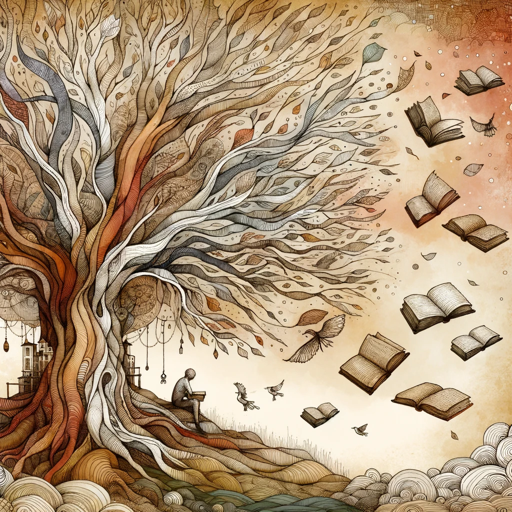Image to Data Analyst-AI Data Analysis Tool
AI-Powered Image Data Analysis
Interpret this graph for me:
How do you read this chart?
What does this data visualization indicate?
Explain the data in this image:
Related Tools
Load More
Data Analyst
Data Analyst designed to guide users through data cleaning, visualization, data analysis, statistical analysis, and machine learning with practical code snippets and clear explanations

Data Analyse
Data Science Expert analyzing user-uploaded data to provide accurate insights.

Image Locator
Analyzes images to identify locations, explains reasoning.

PPT and PDF Analyst with Image Analysis
Professional tone, analyzing PPTs, PDFs, and imagery.

A Data Analyzer
Expert in Data Analysis and Visualization

Image Imitator
Analyzes images, creates prompts & generates similar (or merge into new) images
20.0 / 5 (200 votes)
Introduction to Image to Data Analyst
Image to Data Analyst is a specialized tool designed to extract and interpret data from visual representations, such as graphs, charts, and other forms of data presentation typically found in academic papers and reports. Its primary role is to provide a detailed, step-by-step breakdown of how it reads and interprets each image, making complex data more accessible and understandable. By analyzing various data formats, it offers insights that are crucial for research, academic analysis, and professional reporting. For example, if a researcher presents a graph showing the correlation between two variables over time, Image to Data Analyst can break down the data points, trends, and statistical significance, offering a comprehensive interpretation of the findings.

Main Functions of Image to Data Analyst
Data Extraction
Example
Extracting numerical data from a line graph showing annual sales growth.
Scenario
A business analyst needs to compile historical sales data from various reports. Using Image to Data Analyst, the analyst can extract precise data points from graphs and charts, ensuring accuracy in the compiled data.
Trend Analysis
Example
Identifying trends in a scatter plot depicting the relationship between hours studied and exam scores.
Scenario
An educational researcher is investigating the impact of study time on student performance. By analyzing scatter plots, Image to Data Analyst helps identify positive or negative trends, providing evidence to support the researcher's hypothesis.
Comparative Analysis
Example
Comparing bar charts showing different regions' performance in a company.
Scenario
A regional manager wants to compare sales performance across different regions. Image to Data Analyst can compare multiple bar charts, highlighting differences and similarities, enabling the manager to make informed strategic decisions.
Ideal Users of Image to Data Analyst
Researchers and Academics
Researchers and academics often deal with complex data presented in various visual formats. Image to Data Analyst helps them extract, analyze, and interpret this data accurately, enhancing the quality of their research and publications.
Business Analysts and Professionals
Business analysts and professionals can leverage Image to Data Analyst to make data-driven decisions by accurately extracting and comparing data from reports and presentations. This tool aids in strategic planning, performance analysis, and market research.

How to Use Image to Data Analyst
Step 1
Visit aichatonline.org for a free trial without login, also no need for ChatGPT Plus.
Step 2
Upload the image containing the data you want to analyze. Ensure the image is clear and well-captured for the best results.
Step 3
Select the type of analysis you need (e.g., extracting numerical data, interpreting graphs, or providing a summary).
Step 4
Review the analysis provided by the tool. You can request additional details or clarifications if needed.
Step 5
Download or save the analysis results for your records or further use in your research or projects.
Try other advanced and practical GPTs
Phyton Guru
AI-Powered Python and Pygame Assistance

論文要約くん
AI-powered research paper summarizer

AI Neurology
AI Neurology: Enhancing Neurological Care with Advanced AI.

Exam CheatSheep
AI-Powered Educational Enhancement

Nicole
AI-powered chat, just like a friend.

Filament v3
AI-powered Laravel admin interface

Test Maker
AI-powered test creation simplified.

Sherlock Digital Detective
Unravel mysteries with AI precision

Write the Best Product Descriptions for Ecommerce
AI-powered product description generator

Careful Scribe
AI-driven content creation made easy.

Game Development Assistant
AI-powered assistant for Roblox creators

Мыслью по древу
Empowering Your Ideas with AI

- Academic Writing
- Research
- Data Analysis
- Report Preparation
- Graph Interpretation
Common Questions about Image to Data Analyst
What types of images can Image to Data Analyst process?
Image to Data Analyst can process a variety of images, including graphs, charts, tables, and other data presentations typically found in academic papers or reports.
Is there any cost associated with using Image to Data Analyst?
You can use Image to Data Analyst for free by visiting aichatonline.org. There is no need for login or a ChatGPT Plus subscription.
How accurate is the data extraction from images?
The tool is designed to provide highly accurate data extraction, but the accuracy can depend on the quality and clarity of the image provided.
Can Image to Data Analyst handle handwritten notes or diagrams?
While the tool is optimized for printed and digital images, it can handle some handwritten content, provided it is clear and legible.
What are the common use cases for Image to Data Analyst?
Common use cases include academic research, data analysis for reports, extracting data from scientific papers, and interpreting complex graphs and charts.